With the fact that the transport sector alone accounts for 25% of the global Green House Gas emissions, electric vehicles (EVs) are seen as a core element of sustainable mobility.
More and more people are opting for electric cars as a result of government directives and increased awareness of climate change. But one important question remains: Where should all these new EVs recharge?
For example, the US today has 110,000 public EV charging stations. Experts estimate that five to ten times more charging points will be needed over the next few years due to US President Joe Biden’s goal that by 2030, half of all cars sold should be electric.
In order to reduce the hesitation surrounding the use of EVs, city planners need to make them feasible for the public to use – and sufficient public charging infrastructure plays a crucial role here.
So where are the best locations for EV charging stations to cover this future demand? What does systematic and cost-efficient planning of charging infrastructure look like?
An overview of the EV charging infrastructure forecast
To understand the full potential that the EV industry has, let’s take a look at the current situation:
- EV use is steadily increasing: The EV charging station infrastructure is set to grow over the next decade, primarily due to the financial incentives offered by governments. The US and some European countries are leading the change in this by subsidizing the cost of EV charging station installments and offering tax benefits to green organizations to promote emission-free transport.
- City infrastructure isn’t ready for this growth: The charging station infrastructure, or rather the electricity grid, is not ready to support the growing demand for EVs, which is soon to cause a major problem.
- The EV charging stations market is expected to grow: The Meticulous Research forecast report shows that the EV charging stations market will exceed USD 103.6 billion in 2028 (CAGR of 26.4%), meaning more charging stations will be purchased globally.
What city planners can take from this is that people are prepared to use EVs and the technology is readily available, but we simply need to develop the right infrastructural planning to make everything run smoothly.
What are the biggest challenges in the electric vehicle industry?
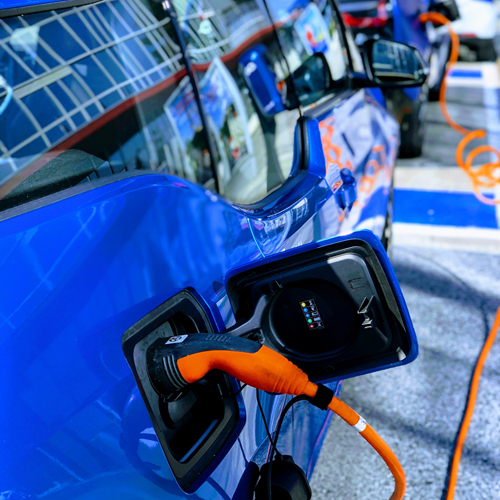
Yes EV use is on the rise, but there are still some factors that hold people back from holistically integrating them into their routines such as:
- Range anxiety: “range anxiety” involves the fear people have that their car won’t make it to their destination, because of the insufficient electric vehicle charging infrastructure they need to get from point A to point B.
- Charging stations are not convenient enough to use: Today it takes just under 8 hours to charge a 60kW battery from zero to full. And without enough charging stations located at convenient spots (such as at home and work), EVs are still not a practical reality for most people.
Expensive costs for charging and electric cars: Although some charging stations are free in order to encourage the use of EVs, others charge by the hour. Furthermore, electric cars are more expensive than regular cars, especially in countries where governments do not provide financial incentives..
How does EV charging station planning affect e-mobility use within cities?
As they now stand, the EV charging stations for private cars are insufficient in most cities. That’s a leading cause of why more citizens are not using electric cars.
Udo Heidl, Head of Modelfactory at PTV, describes the crucial relationship between charging stations and the use of EVs:
“The transition to electrified mobility is well under way with the speed of this change reliant on the automotive manufacturers and the natural turnover of vehicle fleets. One area where city planners can make a difference is in the rollout of charging infrastructure… Widespread and reliable public infrastructure can help make EV uptake more equitable, particularly for those that do not have a driveway or the ability to recharge at home.”
While EV manufacturers and engineers work on developing long-lasting batteries, city officials, mobility planners, energy providers, and private companies are facing the challenge of creating a charging infrastructure that promotes EV usage for the public as a whole.
Nonetheless, through meticulous planning, you can ensure that charging is convenient for the public, and the more convenient it’s made, the more people will use EVs.
Successful EV charging station planning
Despite the issues the EV industry is currently facing, strategically placing EV charging stations in a manner that incentivizes their use is far from impossible.
The Charge EV Project in the UK
Background information:
Since 2019, PTV’s UK team has been working with SP Energy Networks to forecast how e-mobility will develop over the next 3 decades (the time frame in which the UK aims to achieve zero emissions). EVs need an extensive and reliable power network, so determining future demand identifies the best locations for charging points. The project as a whole brings together transport and energy planning.
The task:
PTV set up a detailed traffic model to consider how EV uptake and usage might evolve in the next few years. The model contains data on the local:
- Traffic
- Movement
- Land use
- Population
- Electricity network
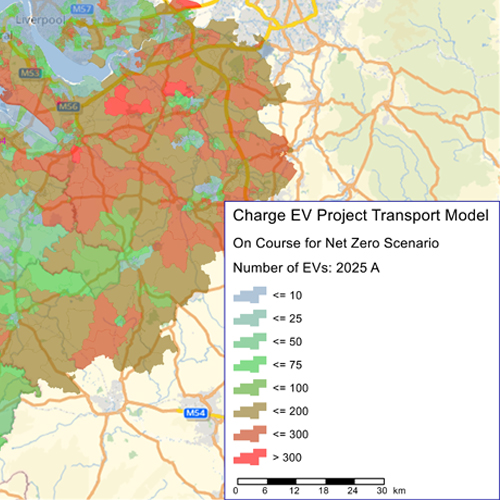
Using different scenarios, the expert team was able to analyze how the emergence of EVs and the charging demand could develop between 2030 and 2050. Important parameters to test this included the potential number of EVs, who is likely to buy them, future battery ranges, as well as progress in terms of public infrastructure.
The solution:
According to Laurence Chittock, PTV’s project leader, combining all of these data points helps with “facilitating the uptake and usage of electric vehicles by helping to plan where and how much infrastructure is required, and ensuring that the electricity networks are prepared to cope with the increase in demand.”
The simulation results have been incorporated into an online tool, which is publicly available now: Connect More.
More information is available on this project here.
Planning system for EV charging infrastructure
Using a similar approach as the Charge Project, PTV is now building a planning system for EV charging infrastructure together with the consulting firm MHP. The web-based tool offers cities, communities, and energy providers the possibility to forecast the future demand by answering questions such as:
- How many people will drive electric vehicles in my neighborhood in the next few years?
- Will they charge their cars at home?
- How many public charging points will be needed?
- What about the power grid capacity?
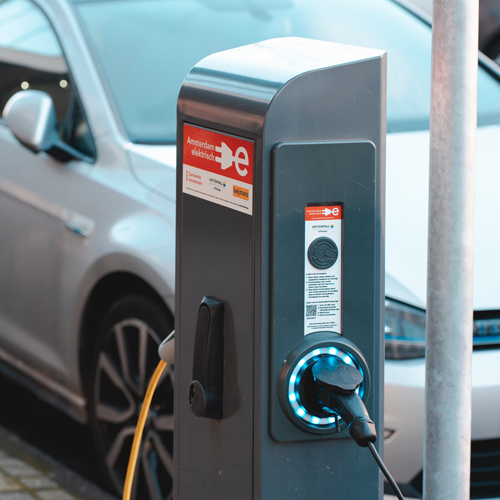
The modelling tool takes into account data on mobility, demographics, urban infrastructure, and the energy network. This enables the forecasted demand to be compared with the existing network capacities. City planners can then systematically and cost-efficiently develop the structure needed and calculate the implementation costs for individual locations. The forecast is also flexible enough in that planning can be adapted to changing conditions at any time.
PTV’s project leader, Udo Heidl, states that, “Our perception is that currently the development of the charging infrastructure is not done in a systematic, well planned way, but it is mostly opportunity driven. The tool will change that. It brings together the future spatial demand (based on predefined up take scenarios) for charging infrastructure (private, semi-public and public) and the capacity and performance of the power grid.”
Emerging best practices for electric vehicle charging infrastructure
As we can see from the above examples, the most important element for increasing the use of EV charging stations is the planning of their placement. In order to make this a reality, here are a few best practices you’ll want to consider during the planning process.
#1 Consider the local electric vehicle charging station requirements
First of all, you need to consider the demand and infrastructure in the local area.This requires data about the current numbers of EV drivers in the area, their travel patterns, battery sizes, charging times, secondary charging options available to them, as well as the population structure. All of this is then combined to estimate the number of future EV drivers. After this, software and traffic models analyze the data and accurately predict the local charging requirements.
Udo Heidl explains how this works:
PTV helps city planners with “a web-based tool that allows planning the development of the charging infrastructure in a systematic and cost-efficient way. In addition, it should make it possible to quickly determine the need and implementation costs for individual locations.”
#2 Review the EV charging levels, strategies, and times
When it comes to EV chargers, there are three different charger levels: rapid, fast, and slow. These differ based on the amount of energy in kW delivered to the car’s battery per unit of time. And each city has a different percentage of specific EVs and charges.
What’s more, most users would of course prefer to use rapid chargers, but this is not always feasible for the local infrastructural conditions. It’s again up to the provider of EV charging infrastructure to make the right decisions concerning different charger levels and the best locations, which is where PTV’s software comes in handy.
#3 Develop reliable power networks
To determine where to place EV charging stations, you also need to review the local power network. EV charging affects the power grid by increasing short circuit currents, changing the lifespan of equipment, and increasing the voltage above the standard limit. If the wrong location is chosen for the charging infrastructure, there is also a risk of high site development costs.
Before taking any actions and starting to build a charging station network, it’s crucial to consult with local power network providers. They will be able to inform you about the power grid capacity and how it will affect each station’s reliability.
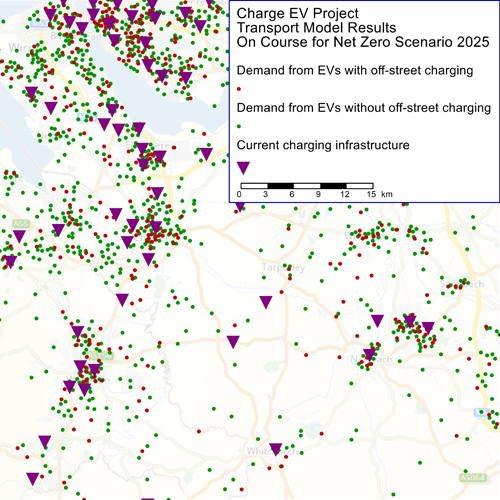
#4 Make the locations frequent and convenient enough to regularly use
We come back again to the topic of convenience: EV users prefer to top up their batteries instead of charging from empty to full, because it saves time. So when you’re building a charging network, you should find the most convenient charging spots by using a planning tool. Here’s how PTV’s Laurence Chittock describes this tool:
“By understanding demographic patterns and how and where people travel…[it] provides infrastructure providers with information about where public infrastructure is needed and where sufficient electricity network capacity exists.”
To cater for the increased and more frequent demand for charging stations, it is always best to place them in highly visited areas such as malls, cafes, office buildings or apartment blocks.
#5 Evaluate the associated costs
You can balance offering convenient locations vs infrastructural needs by proactively calculating the associated costs. These costs fall into two categories:
- Operating costs: Electric vehicle charging station installation charges, seating space, regulations, and operating and maintenance costs.
- Capital costs: This calculation should be both during the planning process and on a consistent basis, because it reveals areas where you allocate costs to incentivization measures such as free charging or reduced charging costs for citizens.
Strategically place electronic vehicle charging infrastructure to promote e-mobility within cities
The demand for EVs is growing exponentially. But consumers still feel range anxiety and are reluctant to take longer journeys with their EVs due to a lack of conveniently placed charging stations.
It’s now up to the transportation authorities and planners to promote e-mobility by improving charging infrastructure. With the help of planning tools based on PTV technology, finding the ideal balance of convenience, cost, and infrastructure is fully within reach.
Additional background information: More information on EVs.

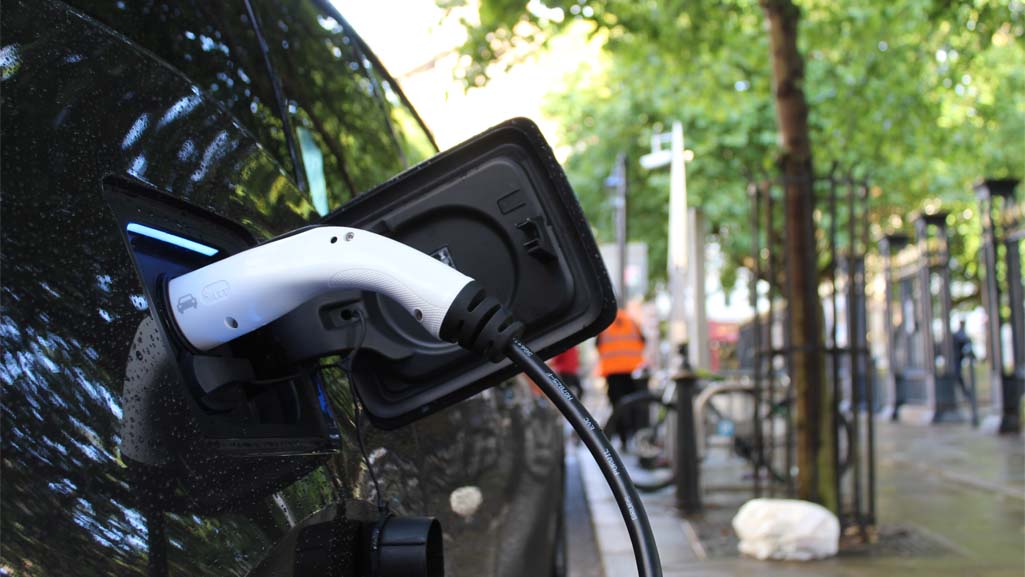
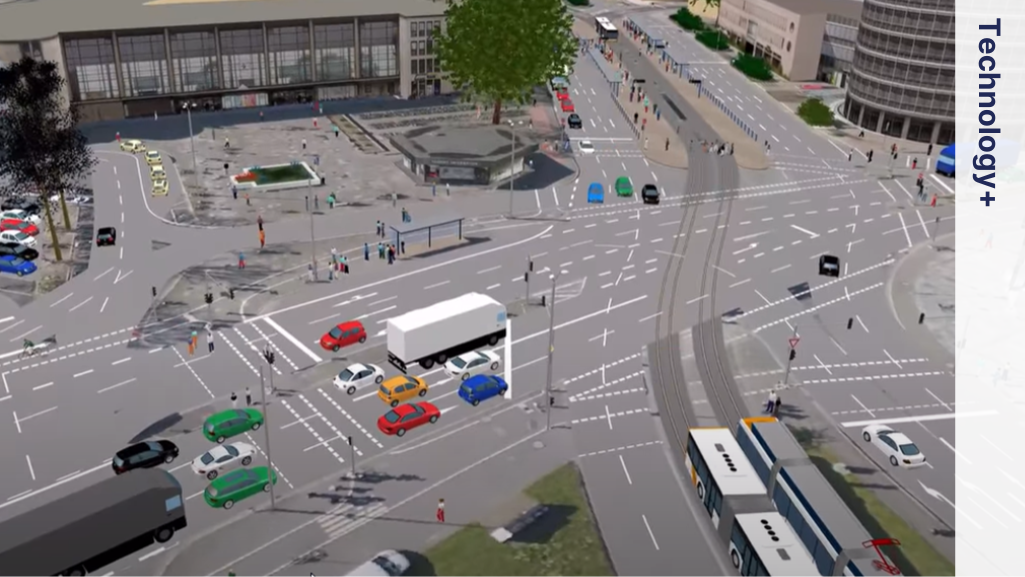
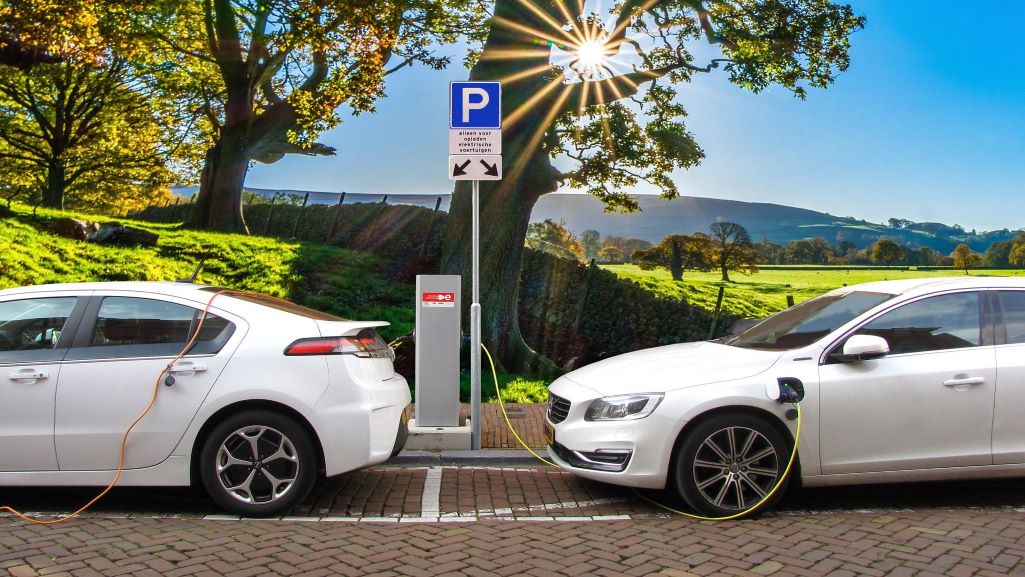
Very useful information provided by the writer, looking more to learn
Effective planning for EV charging stations is essential for the seamless integration of electric vehicles into cities. PTV Group’s article sheds light on the complexities involved in this process. It’s evident that thoughtful planning is key to ensuring convenient access to charging points and promoting EV adoption. This article serves as a valuable resource for city planners and stakeholders looking to create an EV-friendly environment.